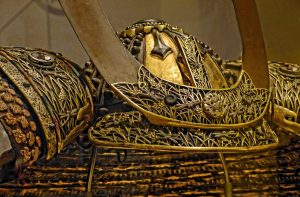…blog by Kaitlyn Elverson, Buglife Engagement Officer, written for National Dragonfly Week 2023
Superstition, myth, and folklore have given dragonflies countless names throughout history, such as the Devil’s Darning Needle and the Horse Stinger. Despite some scary associations, the dragonfly is beloved by many cultures across the world.

The dragonfly shares similarities in meaning with butterfly, both being associated with transformation, light and peace. Although both are insects, dragonflies belong to the order Odonata, while butterflies belong to the Lepidoptera order. Seemingly, the similar associations must arise from them both being winged creatures, symbolising the element of air and its free-spirited nature. However, the dragonfly is more so linked to the idea of emotional change rather than physical transformation, due to it also being connected to the element of water, since their larvae hatch in water. If you spot a dragonfly, it is thought to be calling you to take stock of your emotional state and seek out what needs to change for the better. It encourages you to use its elemental wisdom, using the clarity of water and the communication of air to forge a path to what you need.

In Japan, dragonflies represent good fortune, with the country itself being referred to as Akitsushima or ‘Island of the Dragonfly’ as the curved shape of the landmass resembles a dragonfly at rest. The dragonfly, or tombo or yamma in Japanese, is a national emblem. Even the legendary Samurai had dragonfly emblems stitched into their armour to provide luck and victory to the warriors. During Bon, a Buddhist festival in mid-August, the Japanese people will welcome insects into their homes, believing that the spirits of their ancestors ride on the backs of the insect, or that the dragonflies are the ancestors themselves, bringing lost family temporarily home to those still living.
On the other side of the world, in European countries, the dragonfly bears significant relations to Freya, the Norse Goddess of love, fertility and warfare, for which to her they are sacred. In ancient Norse lore, dragonflies represent insight, transformation and adaptation and it is thought that the sight of a pair mating, making a heart shape, is the origin of the modern symbol of love.
Across the UK, the dragonfly has been known by many names. In England, they were known as the “Devil’s darning needle” and “Horse Stinger”, with people believing that they possessed a painful sting and supposedly had the power of knowing whether a child had been good or bad. Therefore, when children would play by the water’s edge, where the dragonflies flew, good children would be left alone, but the bad ones would be stung by the dragonflies. In South Wales, dragonflies were closely related to snakes, donning the name “gwas-y-neidr” or “Adder’s Servant” and would apparently either charm snakes into a trance to tame them, or follow them around and stitch them up if they became injured (perhaps also linking into the name of the “Devil’s darning needle”, with snakes having unfavourable associations with the Devil himself). The snake theme is also present in the Scots Gaelic name for dragonflies “tarbh nathrach”, which translates as ‘bull snake’ and in lowland Scots where it is called “bull-edder” or “bull-adder”. There is one positive spin on dragonflies in English folklore however: it is considered very bad luck to kill or harm one.
There are many ways we can help our dragonfly friends from home, in your community, at school or in your local wild spaces. Some of the easy ways you can support dragonflies are:

- Creating a pond. Adding an area of water, standing, or flowing in your garden is the perfect way to attract dragonflies and other water-loving invertebrates to your back yard. It doesn’t even have to be a huge dug pond. You can even use a large dish you might stand big plant pots in, a bird bath or something like an old sink, fill it with water and place some rocks inside that are big enough to stick out just above the water line to provide a perch for dragonflies and other insects to land on. It’s important to create your pond in a shaded area as high-water temperatures can be fatal to many invertebrates. Any trees and shrubs should be restricted to the northern margin, but use small leaved native species as their leaves will break down quicker.
-
- Top Tips for making a pond for invertebrates:
– Try to keep the water as fresh and unpolluted as possible. Don’t use any nasty chemicals in the water.
– Don’t make the water too deep. For example, a 2m by 2m pond only needs to be about 30cm deep to start attracting dragonflies as they only live in the shallows.
– Provide plenty of cover around the edges of the water. Include deadwood or log piles, sand, or gravel where possible to provide a variety of habitat for dragonflies to lay their eggs in.
- Top Tips for making a pond for invertebrates:
-
- Creating a wetland or bog garden. If you already have a pond, enhance the habitat around it by planting freshwater or wetland species such as Marsh-marigold (Caltha palustris), Water Avens (Geum rivale) and Snake’s Head Fritillary (Fritillaria meleagris) that wetland invertebrates
Main image: Hairy Dragonfly (Brachytron pratense) © Charlie Jackson (Flickr, CC)